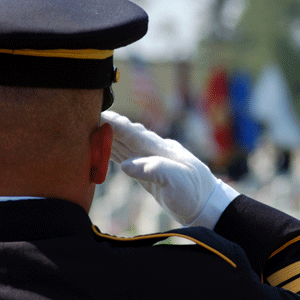
The Department of Veterans Affairs has announced that it will add 1,600 mental health clinicians and 300 support staff to veterans hospitals across the country to help contend with the rising demand for mental health care among returning veterans. That's an almost 10% increase in mental health staff and is sorely needed at hospitals that can't keep up with the requests for appointments. In some places, wait time for care is much longer than the VA's 14 day policy, the subject of a report by the department's inspector general to be released next week.
Northern California may be faring slightly better than the rest of the country on mental health issues. “In Northern California we have many veterans coming back. We also have a lot of staff," said Robin Jackson, a spokeswoman for the Department of Veterans Affairs Northern California Health Care System. "We’ve tripled our mental health staff in the last 4 years. So we many be ahead of the curve,” she added. Jackson said that staff in Northern California realized that traumatic brain injury and other mental trauma would be the most common illnesses in returning Iraq and Afghanistan veterans, so they ramped up their staffing to meet the need.
Northern California VA's are meeting the department's 14 day timeline to see veterans in need of mental health treatment, according to Jackson. She also said they've been doing some innovative things to help veterans feel comfortable using the VA, and to diagnosis them early. “We do a post deployment health reassessment,” Jackson said, citing the recent return of a National Guard unit where all members were given the health assessment. "They get familiar with what we have to offer and feel comfortable to come back,” she added. Jackson says California has always been at the forefront of practices like these because of the state's large veterans population, especially in Southern California.
Southern California has seen a sharp increase in mental health need, almost doubling the number of patients between 2006 to the present. Dr. Peter Hauser, mental health program coordinator for the Southern California network of VA health care facilities, estimates that 20 to 30 percent of returning veterans from Iraq will have Post Traumatic Stress Disorder (PTSD). He added that the VA network expects more demand as former soldiers try to reintegrate into civilian life and experience employment difficulties that exacerbate existing traumas.
Dr. Hauser expects his region to get 111 new mental health professionals. "We are working hard to fill all existing vacancies and ramp up recruiting to hire new staff and create outpatient mental health teams that enhance continuity of care," he wrote in an email. Southern California has had a hard time filling vacancies on its mental health staff that already exist. Dr. Hauser cited high cost of living in Southern California, salary competition from private networks and overal budgetary contraints as reasons why recruiting and filling psychiatrist positions has been difficult.